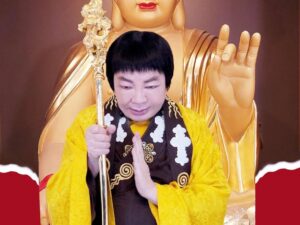SB54-Saddharmapundarika (Lotus) Sutra
- Description
- Curriculum
- Reviews

The Lotus Sutra of the Wonderful Law is one of the most famous and widely-read sutras of Shakyamuni Buddha. The Lotus Flower symbolizes the enlightened mind that all sentient beings intrinsically possess. This sutra emphasizes the continual practice and pursuit of this enlightened mind lifetime after lifetime on the road to the ultimate accomplishment of Annutara Samyak Sambodhi. Indeed, the Lotus Sutra offers glimpses of the past lives, the past associations, and the prophesied future lives of many Buddhas and Bodhisattvas. The Lotus Sutra introduces defining Mahayana principles in colorful ways that speak to both intuitive and practical mind processes. Its similes, parables, and stories help us to deeply understand Buddhist principles while working out the meanings of the symbols and stories in the text. H.H. Dorje Chang Buddha III told us in Learning from Buddha that “If you are a master with disciples, you must at least study in depth some sutras and commentaries as a foundation, such as . . . the Lotus Sutra . . . , and others. Doing so will reduce the possibility of leading others astray in the process of teaching.” In this course, students are encouraged to figure out the underlying meanings of the similes and parables wherever they can, and to cherish as questions those parts of the text they do not yet fully understand. It is long sutra with 28 chapters. Reading and question assignments are generally grouped into lessons of two chapters each. Students may advance through the course at their own pace. The text is uploaded as a pdf file of the Burton Watson translation published in 1993 by Columbia University Press. You may download this file as part of the first Lesson and save it to your own computer. Students may feel free to search the internet for additional insights if they feel that would be helpful. The curriculum includes assignments and group discussions. This interactive course is not available for those enrolled in the free membership program for AUDITING STUDENTS. It will only be part of the paid membership program. Click on the “Curriculum” tab to review this course. If you have not registered for a membership, please click on “Membership” on the top menu bar to select your membership and enroll in this course. You are also required to complete the application form provided in course “G02-Spiritual Autobiography” prior to being admitted to either the BUDDHIST STUDIES or the XIUXING SEMINARY PROGRAMS. CLICK for detailed Procedural Guide under the “STUDENT MANUAL” in the website’s top menu bar for more information You will also need to complete D35(A)-Buddhism for Beginners, The 128 Evil and Erroneous Views, a prerequisite for all biographies and translations of holy texts, and use those views to evaluate the text or the translation.




